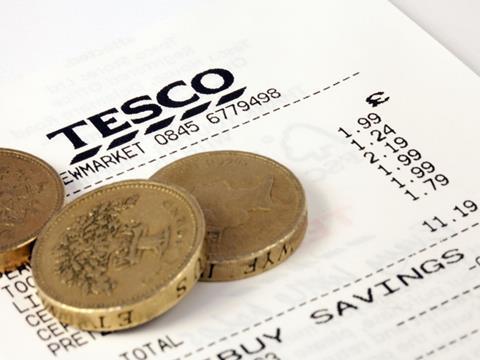
Moving from food-on-the-go to smartphones over recent weeks, Tesco couldn’t be accused of being uncreative in its bid to win back shoppers. Its latest move, as revealed by The Grocer last week, is to aggressively try and replicate the success of the pound shop model.
It rolled out its new pound shop offer to 61 stores on 12 March and plans to have rolled it out to 285 stores by August, spanning every format from Express to Homeplus and covering all four corners of the UK.
New PoS carries the message ‘Brand Outlet. Big Brands Small Prices’, while shelf-edge material urges customers to ‘hurry while stocks last’.
But will they flock to the new zones? After all, it’s not the first time Tesco has taken on the pound stores. It first rolled out a pound shop strategy to selected stores in 2009 under the ‘£ shop’ banner. What’s so different this time around, why is it escalating its offensive now - and why are the likes of Iceland chief executive Malcolm Walker claiming they’re “not worried whatsoever”?
“I’m not worried. Tesco’s model isn’t really set up for this”
Malcolm Walker
The zones are certainly bigger and bolder than the old ‘£ shop’ fixtures, which primarily featured limited or seasonal lines and were not always a permanent fixture. Although Tesco insists prices will primarily be £1 with the focus mainly on non-food items, in the New Ollerton store in Newark, Brand Outlet features everything from the autobiographies of Tulisa and The Stig to toilet rolls, crisps and petfood, with prices ranging from 30p to £2.50.
The locations of the existing 61 zones are also revealing. The Grocer understands that the stores that have so far been chosen are located within a mile of a single price discounter or variety store such as Home Bargains or B&M Bargains.
A Tesco spokeswoman confirms the zones will be introduced to stores in “price-sensitive areas” where the demand for low prices is at its highest. “Philip Clarke has spoken about how stretched our customers are in terms of disposable income so this makes absolute sense,” she adds.
As it did to Asda, of course. Following a trial in 2012, it now has a £1 area in 578 of its stores. With Asda seemingly in its sights as well as the pound stores, Tesco is unsurprisingly keen to talk up the initiative.
“As you can see by the scale of the rollout, the investment in PoS and the vastly improved range, this is a project that Tesco is taking very seriously and should prove successful for us all,” said Paul Bangs, Tesco’s pound shop buying manager, in a leaked letter sent to suppliers in March.
Iceland boss Malcolm Walker, a pioneer of the round-pound offer, is not convinced, however. “I’m not worried whatsoever. It is one thing having a pound shop on the high street and another putting one in store. I don’t understand it. Tesco’s model isn’t really set up for this and I can’t see it being the solution to its problems.”
“Tesco cannot spot buy”
Worryingly, some of Tesco’s suppliers appear to agree. “Tesco cannot spot buy. If we go to a high-street pound chain they will make a decision there and then. Tesco can’t do that,” says one supplier providing lines for Brand Outlet. “They cannot take advantage of clearance stock that becomes available for immediate dispatch or shift short-dated products either. This seems to be a box-ticking exercise as their internal buying structure has no real experience of this model at all.”
Another supplier, who claims 80% of Brand Outlet’s volume will be sourced direct through regular suppliers and 20% through alternate markets, adds: “Bearing in mind the price establishment rules for promotions and the frequency with which Tesco promotes, it will have to differentiate from its current model to make a permanent pound zone work.”
How £ shop store numbers stack up
520
Poundland
245
Poundworld
243
99p Stores
1,008
Total
285
Tesco Brand Outlet (by August)
578
Asda £1 shop
863
Total
However, Tesco insists it will offer suppliers flexibility and hints that it will match some of the selling practices seen at high-street pound shops. “We want to make sure we’ve got a really good range of customer offers for a range of food and non-food products,” adds the spokeswoman. “The selection will change over time and specific lines will be sold on a when-it’s-gone-it’s-gone basis.”
Steve Dresser, director of Grocery Insight, believes the pound zones are a step in the right direction. “This is a refinement of what Tesco has done with pound aisles in the past and a good way to use up free space in bigger stores,” he says.
Denys Shortt, chairman of the DCS Group, which has rolled out its own Pound Zone concept to thousands of convenience stores across the UK, has seen Brand Outlet and says it is a “great” way to steal footfall from discount rivals. However, he does have some caveats. “What Tesco now needs to do is replicate the ‘treasure hunt’ feel Poundland has perfected and make sure listings are unique as the range isn’t great at the moment and won’t be the most profitable,” he says. “Pound stores are finding extra margin by importing brands from Eastern Europe or selling bulk items, and Tesco must acquire ‘exclusive branded lines’ re-engineered to a low price to make this a success.”
Even if Brand Outlet is still a work in progress - as suggested by Bangs’ invitation to suppliers to nominate lines ahead of a range refresh in September - Shortt argues that the pound shops should be worried.
They insist they have nothing to fear, needless to say. “The challenge for supermarkets is that customers might not appreciate the idea that one product is priced at £1 in the pound aisle yet the same or a similar product being priced higher or lower elsewhere in the store,” says Chris Edwards Junior, trading director at Poundworld. “The pound shop model is all about convenient high-street locations and a very specific customer, we don’t see out-of-town supermarkets as a threat.”
Hussein Lalani, MD of 99p Stores, is equally dismissive. “I’d be surprised if this lasted six months.”
Tesco will be hoping to prove them wrong.







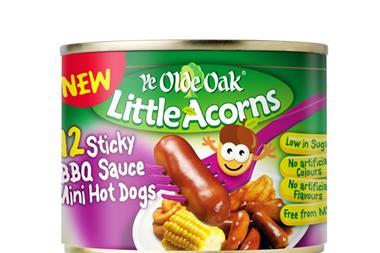
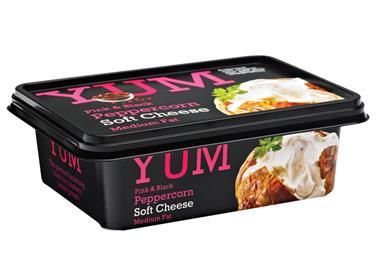
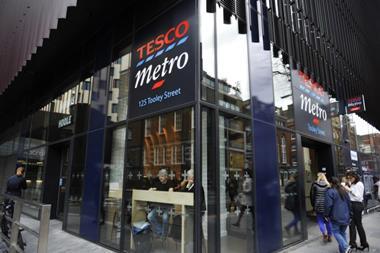

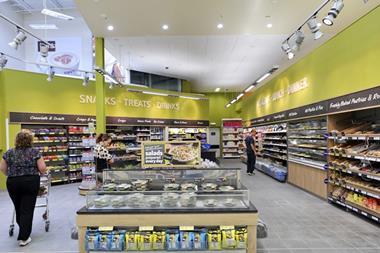







No comments yet